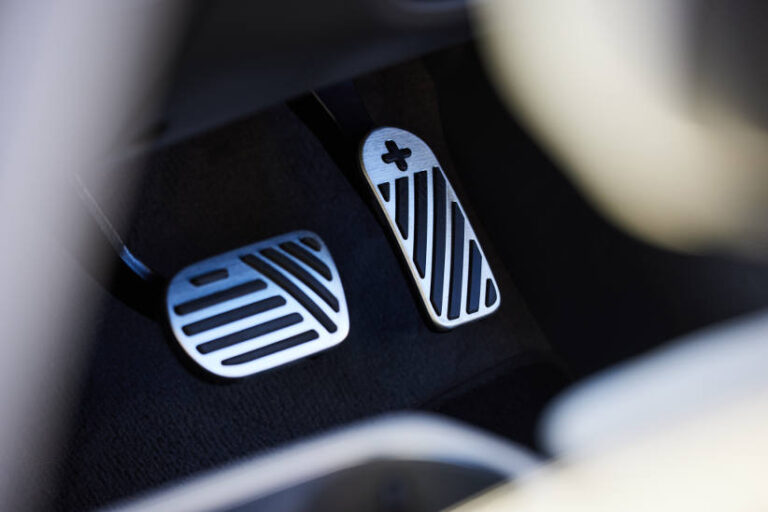Have you ever driven a dodgem car? That’s where the i-Pedal (also called an e-Pedal) idea came from; using one pedal to control acceleration and braking in an electric vehicle.
When Nissan announced back in 2017 that the new model Nissan Leaf would come with an e-Pedal, I immediately thought they had removed the brake pedal. At the time Nissan said:
e-Pedal technology is the world’s first one-pedal operation that allows drivers to bring the car to a complete stop even on hills, stay in position, and resume driving instantly.
Drivers can cover 90% of their driving needs with the e-Pedal, making the process of driving more exciting. In heavy traffic and during city commutes, drivers will greatly reduce the need to shift from one pedal to the other, making your drive simpler and more engaging.
One pedal driving has now become common in electric vehicles because of regenerative braking which recharges the battery when the vehicle is slowing down. It’s takes some adjusting to your driving style and its often the thing people notice when driving an EV for the first time (normally after they’ve pressed the accelerator too hard and reached 100 km/h quicker than they expected).
In a recent drive of the Genesis G80 electric luxury sedan, I found myself using the i-Pedal all the time. It didn’t default to the i-Pedal setting at start up, so I had to flick the paddle on the steering wheel to select it. Once I was in i-Pedal mode I hardly touched the brake pedal.
It’s fantastic in traffic and perfect for speed bumps because the regenerative braking can bring you to a complete stop. You control the speed with constant pressure on the accelerator pedal. Once you release some pressure, the electric car will slow instantly. You apply or maintain pressure to manage the speed which means the vehicle is never coasting giving the driver more control.
ICE vehicles do slow down once you release the accelerator but the rate of deceleration can vary, and you won’t come to a complete stop without applying the brakes. This causes wear on the brakes and increases maintenance costs for fleet operators.
The level of regenerative braking can be adjusted in the electric Genesis G80 and you can make it coast like a petrol car. Though after several days using the i-Pedal it felt too unsettling when coasting towards a stationary vehicle at speed.
Like all change it takes some time to adjust. Some people will not like it. However, when combined with the other active and passive safety technology on EVs, the e-Pedal will help Fleet Managers to reduce emissions and accidents in their fleet.






